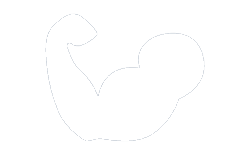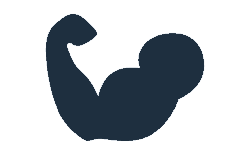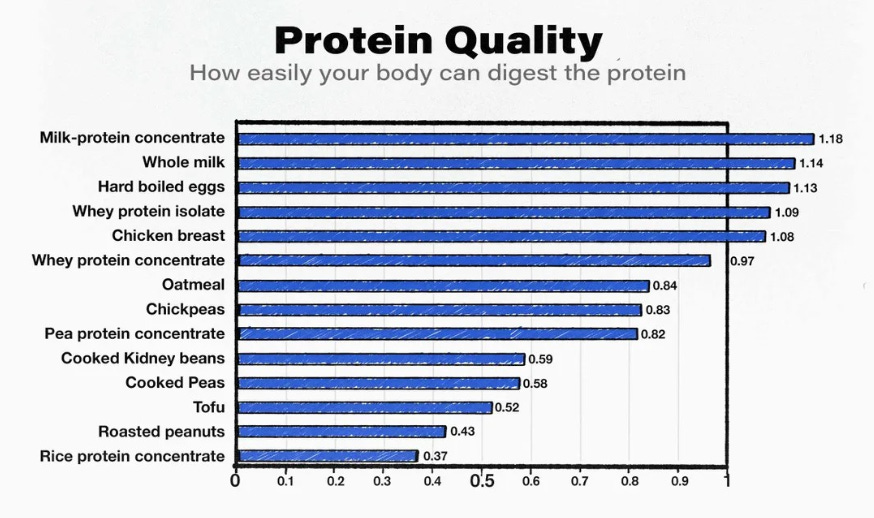· weightlifting · 6 min read
How to Do Progressive Overload for Building Muscle: (This Will Shock You)
Progressive overload is the cornerstone of any effective strength training program. Applying this concept allows you to systematically increase demands on the muscles so they continue adapting and growing over time.
Progressive overload is the cornerstone of any effective strength training program. Applying this concept allows you to systematically increase demands on the muscles so they continue adapting and growing over time. But what exactly does progressive overload involve and how do you implement it correctly in your own workouts? This in-depth guide will teach you everything you need to know about progressive overload, along with pro tips for tracking your training with MyLiftLog.
What Is Progressive Overload?
At its core, progressive overload refers to gradually increasing the stress placed on the muscles. This stress can come in the form of lifting heavier weights, increasing volume with more reps or sets, reducing rest times, training at a higher intensity or frequency, and more. The key is applying a challenge that extends beyond what your body is accustomed to in a logical, step-by-step manner.
Progressive overload exploits the body’s natural adaptation response. When your muscles experience unfamiliar stress, your body reacts by rebuilding the muscle fibers bigger and stronger. This allows you to lift heavier weights and do more reps the next workout. Over time, these small increases compound for incredible gains. Without consistently overloading the muscles, you’ll plateau as your body no longer needs to adapt.
Is Progressive Overload Healthy?
Absolutely! Progressive overload is the driving force behind all muscle and strength gains. This is because it activates mechanotransduction - the process where muscle cells sense mechanical tension and respond by synthesizing new proteins to reinforce the fibers. This explains why targeting lighter weights for endless reps stops yielding results. Only true progressive overload provides the increasingly heavy loads needed to promote growth.
Not only is this strategy healthy, it’s necessary for lean mass development. No other training method stimulates strength and size increases as efficiently. With proper recovery and nutrition, progressive overload is safe for all ages and fitness levels. It prevents your workouts from becoming stale and helps break through plateaus. Just be sure to increase weight gradually and use proper form to avoid injury.
How Much Should You Increase Weight, Reps or Sets?
As a general guideline, aim to add 2-10% more weight or 1-2 extra reps each week for compound lifts like squats, deadlifts and bench press. Start conservatively with smaller increases, then gradually progress as your abilities improve. Bumping up sets by 1-2 per exercise is another option once you max out on weight added.
For isolation lifts, increase weight by the smallest possible increment - usually 5lb dumbbell jumps. Again, start small. You may find certain exercises require slower progression than others. Always listen to your body and don’t increase so drastically that it impacts form or causes pain. Consistency over the long haul is key.
Should You Overload Every Single Workout?
You don’t necessarily need to increase weight or reps every gym session. In fact, this could quickly lead to overtraining. A better approach is applying progressive overload once or twice per week for each exercise. Allow recovery days where you lift lighter in between overload days.
A good program alternates heavy and light days centered around different rep ranges and intensities. After hitting new maxes, give your body sufficient rest to adapt before increasing again. Aim to add more weight or reps at least every 2-3 weeks per lift. Proper periodization maximizes gains while preventing burnout.
Does Progressive Overload Work for Fat Loss?
Absolutely! Many wrongly assume that to lose fat, you must only focus on cardio and high reps. However, heavy strength training provides enormous metabolic benefits that help elevate your daily calorie burn. The more lean muscle mass you build via progressive overload, the higher your basal metabolic rate becomes. This causes you to passively burn extra calories even at rest.
When combined with a calorie deficit, progressive overload helps reveal impressive muscle definition as you drop fat. The heavy loads optimize muscle retention - preventing your metabolism from plummeting. While cardio complements weight training, progressive overload boosts your metabolism for accelerated fat loss.
Follow a Progressive Overload Program
Trying to structure progressive overload yourself can quickly lead to frustration and subpar gains. The smartest approach is following a pre-designed program that systematically manages training variables to maximize results. MyLiftLog provides professionally-created programs focused on strength, mass, fat loss and more.
The platform makes it simple to overload your muscles on a schedule with built-in periodization, deloads and progress tracking. Based on your experience level and goals, MyLiftLog will prescribe lifting targets each session and adjust loads over time for continued gains. This takes the guesswork and planning off your shoulders so you can focus on proper execution.
How to Structure Your Own Progressive Overload
If you prefer to create your own customized workout routine, keep these tips in mind:
- Vary your main variables - weight, sets and reps - in a logical sequence each week. For example, first increase weight, then reps once you plateau. Reduce rest times or add sets to continually add new challenges.
- Incorporate heavy strength days along with higher rep hypertrophy days. Power and explosiveness days also complement progressive overload.
- Schedule deload weeks every 6-8 weeks where you intentionally reduce volume and intensity by 30-50%. This allows your body to recover and adapt.
- Use double progression by upping reps until hitting a target (like 12 reps), then increasing weight and dropping back to a lower rep range.
- Progressively add sets over time to increase volume. Just make sure you scale weight accordingly.
- Focus progressive overload on compound lifts like squats, deadlifts, presses and rows before isolation moves.
Leverage MyLiftLog’s Tracking
MyLiftLog provides the best tools for implementing progressive overload in your own routine:
- Build fully customized workout plans with your lifts pre-programmed to overload progressively each session. This removes all guesswork.
- Easily track weights, reps, and sets completed each workout. Graphs and metrics analyze if you’re progressing optimally or need to recalibrate intensity.
- Input subjective feedback about energy, motivation, soreness and fatigue so the app can gauge your readiness to increase load.
- Receive automatic recommendations for lifting more or backing off to prevent overtraining and plateaus.
MyLiftLog. combines cutting-edge technology with proven training methodology for dialing in progressive overload unlike any other platform. Sign up now to start increasing your strength and muscle gains!
The key is consistency. Stick with a properly structured progressive overload program, leverage MyLiftLog’s tracking tools, and the results will come. What tips do you have for progressive overload success? Let us know in the comments!






